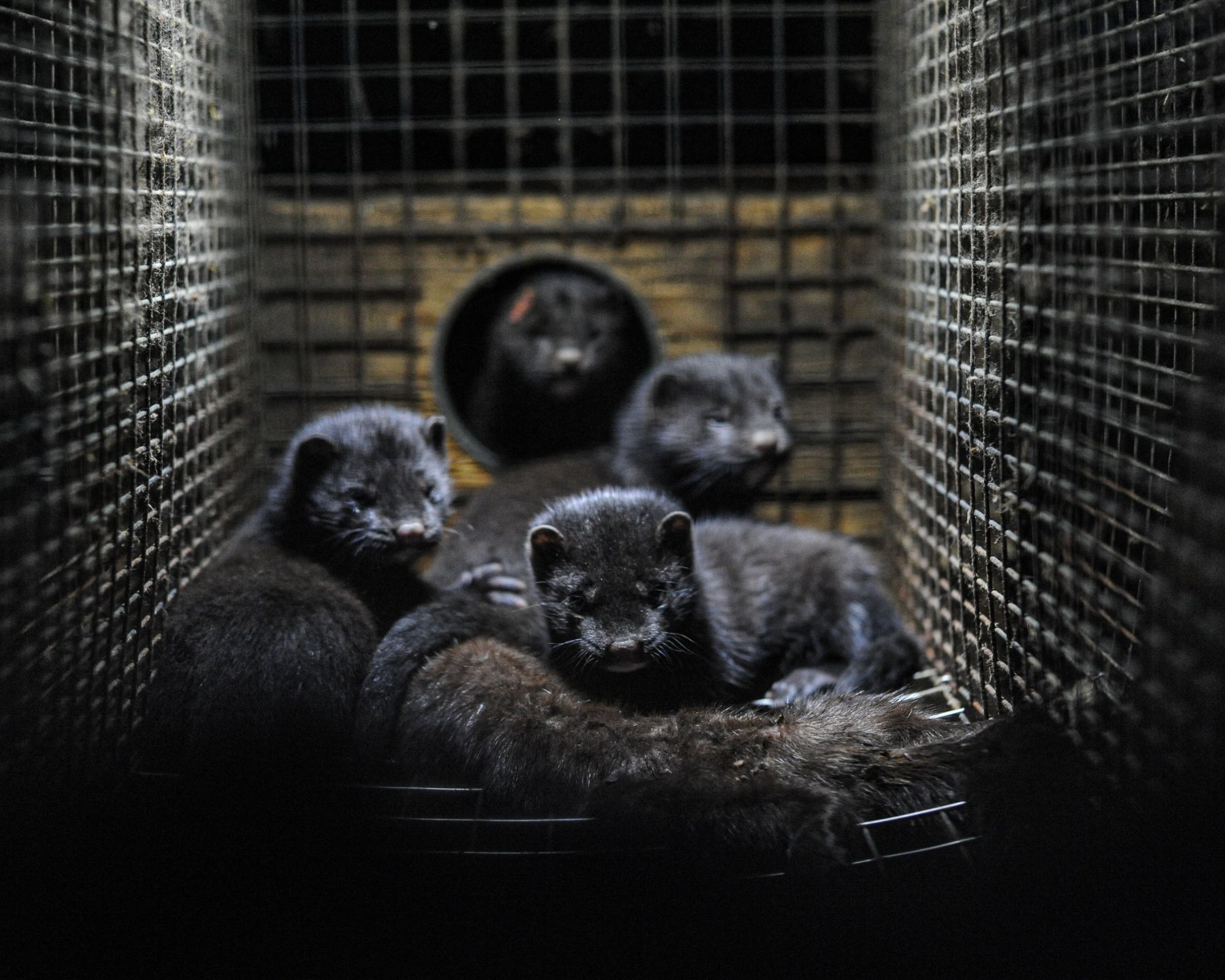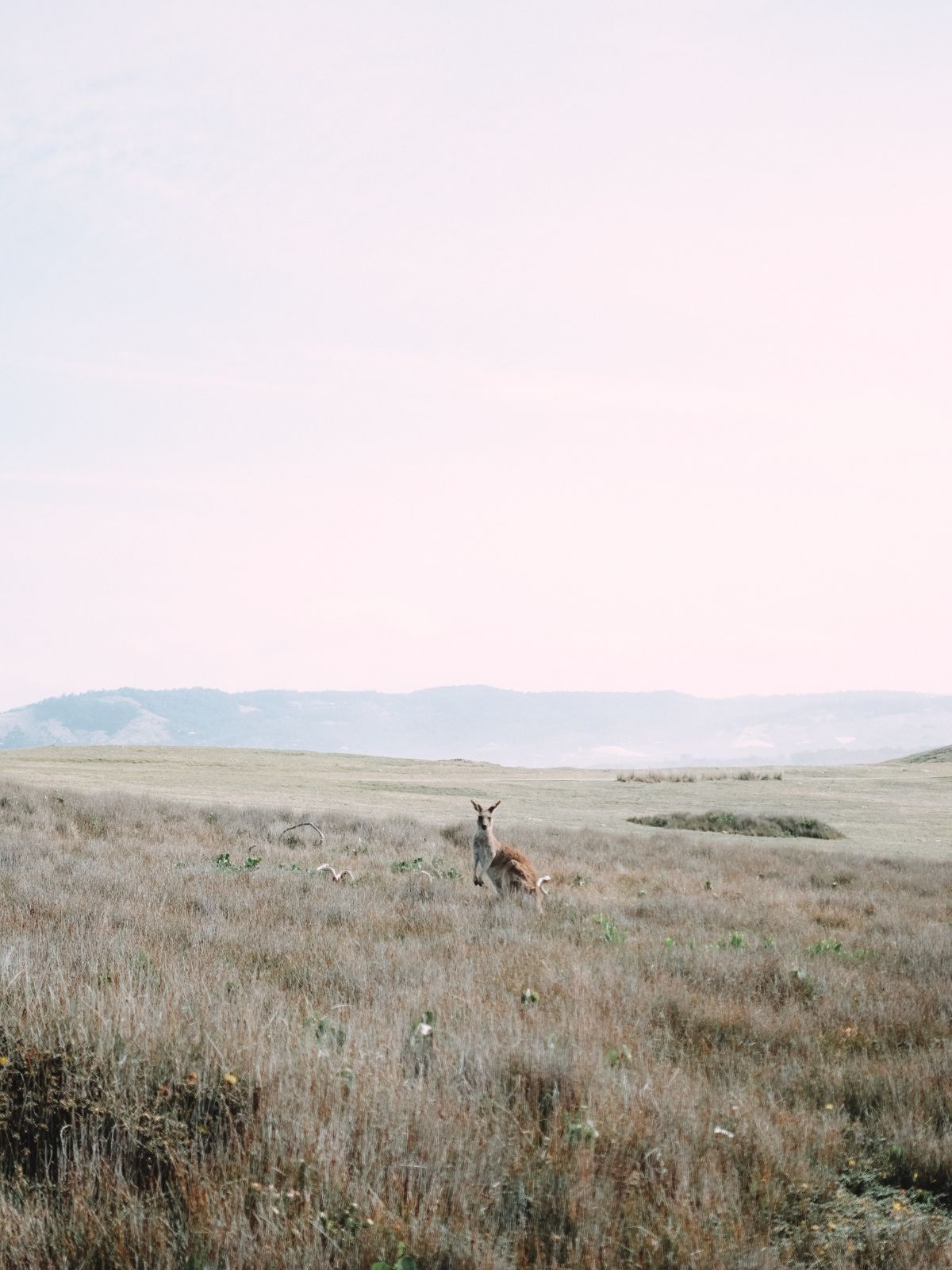Wearing animal fur is falling out of fashion—fashion week events are banning its use, as have the majority of major luxury and well-known fashion brands. Whole governments are considering and passing legislation banning fur farming and even fur sales. So why is fur unethical, and is it unsustainable, too?
Fur in fashion: a recent history
The fur and skins of animals have been worn by humans as far back as 120,000 years ago. Today, we have created a fashion industry that offers far more choice in what we keep warm in, and what we wear to express ourselves. The fur industry today also looks very different from prehistoric times: 95% of fur comes from animals confined in wire cages on factory-farms which often pollute their surrounding environment.
Not so long ago, American and British advertisements for dog fur coats weren’t considered unusual, and slogans like “life is too short… to go without mink” were printed with little backlash. Following colonisation in Australia, koalas were nearly driven to extinction for the international fur trade, while toolache wallabies were wiped out.
Today, the fur industry itself is far from extinct—the estimated value of the industry in leading production country China alone sits at US$61bn. However, we’ve taken major steps away from fur. Austria, the Netherlands, Slovenia, the United Kingdom, Norway, Serbia, Slovenia, and several other countries have all banned fur farming, and as many as 69% of the most profitable luxury brands have banned fur from their collections. 95% of brands rated on Good On You are reportedly fur free, too. As more innovative, sustainable alternatives to fur develop, this positive progress is sure to continue.
But how does the current fur industry impact people, the planet, and animals? Let’s take a look.
The impact of the fur trade on animals
While investigations exposing the sale of domestic cat fur make headlines because of our close proximity and care for the species, global public opinion polling shows us that it’s not what species is killed for fur, but the production and wearing of fur at all, that people are no longer willing to accept. There is a societal shift as more and more consumers are beginning to realise that animals needn’t be killed for our wardrobes.
Killing and skinning
What goes on behind the scenes in the fur industry is brutal and confronting for the average consumer: even the slaughter methods labelled by the industry as “humane”. These methods prioritise protecting products from damage for the sake of profit, disregarding the suffering behind the “fashionable” animal skins. The two most common slaughter methods on fur factory-farms? Electrocution and gassing. The details of how invasive electrical probes are, and how long it can take for animals to die from CO2 gas are distressing. Worse, investigations have shown time and time again that many animals on fur farms are beaten to death, some even skinned alive.
Animals that aren’t factory-farmed, but instead trapped in their natural habitat—like coyotes, some foxes, raccoons, beavers, and so on—have no better fate: these animals are known to gnaw off their own limbs in efforts to escape traps, and those who do not are usually shot. A wide range of torturous treatment has also been documented in the “trapping” branch of the industry that is proving nigh impossible to regulate.
Cruelty is one fashion statement we can all do without
Rue McClanahan
Factory-farming wild animals
Some of the most commonly factory-farmed animals in the fur industry are all wild, undomesticated animals: mink, foxes, and racoon dogs. Mink are solitary animals who, in their natural habitat, live near water—which they can swim under for about 30 metres. These territorial individuals enjoy their own space, just like foxes do. The psychological impacts of their confinement are significant.
Despite their natural traits and urges to dig dirt and roam wide, these animals are kept in barren wire cages, in close confines with others. A standard fox fur farm cage is about one square metre, while they naturally roam about 10 square kilometres—that’s 10 million times less space. Unable to act out their most basic urges and desires, these species show clear signs of intense psychological distress on fur farms. Psychosis-related behaviours like endlessly circling their cages, continually nodding their heads for hours at a time, self mutilation, and even cannibalism are all too common.
Too, these cramped conditions cause health crises and rapid disease spread: an issue brought to the forefront of many of our minds at the beginning of the COVID-19 pandemic, in which 17 million mink in Denmark were slaughtered, due to an outbreak of the virus which had begun to spread to humans.
The impact of fur on the planet
While the inherent cruelty of the fur industry is reason enough to avoid fur for the conscious consumer, sustainability is always a critical factor to consider whenever we talk about fashion. While the animal fur industry refers to itself as the “natural fur” industry, evoking green, eco-friendly thoughts, these claims are little more than greenwashing. In fact, a fur industry advertisement which claimed fur was “eco-friendly” and “natural” was banned after being declared “strongly misleading” by French advertising authorities.
Climate impact
As fur is promoted as “natural”, it’s often assumed that it must be climate-friendly. However, factory farming is a resource intensive, carbon emitting process—and fur production is no different. Due to the emissions on factory farms and throughout the fur supply chain, a single fox fur pelt can have a climate impact equal to as much as 83kg of CO2e.
And while fossil-fuel derived, virgin synthetic faux fur isn’t an ideal solution, even this material has a far reduced climate impact compared to animal fur. An independent study comparing a faux fur and mink fur coat climate impacts—including hypothetical end-of-life incineration—showed the mink fur coat to have a CO2e footprint nearly 250kg higher.
Factory-farm pollution
Animals farmed for their fur are almost all carnivorous, and are fed enormous amounts in order to reach slaughter weight. Some animals are fed even more, and are selectively bred to be so heavy in order to produce more skin and fur for profit, that they have bent feet and difficulty walking. Not only is this cruel, but the amount of feed required on fur farms is wasteful and inefficient. To produce one kilogram of fur, made from the skins of 11 animals, a whopping 563kg of feed must be produced.
The faeces produced on fur farms is an environmental concern, too. Fur factory-farming is a serious and significant cause of ammonia and phosphorus emissions, caused by this faecal build up. These emissions can also lead to eutrophication, a process which can in turn create aquatic “dead zones” that kill marine life.
Biodegradability and toxicity
Fur might be natural when it’s on animals, but for skins to be made into wearable materials that don’t rot in our closets, they must be “dressed”. Fur “dressing” is similar to leather “tanning”. Even according to industry research shared and funded by initiatives like Sustainable Fur, processed fur is not effectively biodegradable, even if it is undyed. Some of the fur samples in the industry funded study broke down just 6.6%, even in controlled conditions.
Some of the substances used in fur dressing include chromium and formaldehyde, alongside other heavy metals. These substances have been found on tested fur products sold around the world, and if a fur garment was attempted to be composted, these chemicals could harm soil health.
The impact of fur on people
Fur-dressing health impacts
If substances used in fur-dressing harm the planet, it’s probably not surprising that they harm the people working in the fur-dressing industry, too. An extensive report from ACTAsia found that “the surfactants, solvents, acids, tannins, fungicides, dyes, and bleaches [used in fur dressing] subject industry workers to a risk of acute and chronic conditions, ranging from skin complaints to eye irritation, cancer, and even death”. Many workers in fur production hotspots work unprotected, with 33 toxic chemicals that are banned across Europe.
There is even evidence that wearing fur with high levels of these substances can harm human health. Fur product testing across numerous countries have found garments to be “substantially contaminated with hazardous chemicals at levels breaching legal industry standards”. Some tested products were sold for babies to wear, while others showed carcinogenic substances to be recorded as 250 times higher than the legal limit.
Mental health impacts
While research specific to the fur industry has yet to be completed, broader studies show that those who work jobs slaughtering animals are at risk of facing perpetration-induced stress disorder. Similar to PTSD, those suffering with PITS face symptoms such as anxiety, panic, depression, increased paranoia, a sense of disintegration, dissociation, or amnesia. These struggles are considered “psychological consequences” of the act of killing, and causing trauma to other living creatures—trauma which then manifests internally. Numerous personal stories from those working in slaughtering jobs reflect this research. It’s very possible that these impacts afflict those working in the fur industry, too.
I spent ten years working for the fur trade, and in that time I visited fur farms across the globe so I’ve seen the reality of fur farming…I no longer had the conviction that what I was doing was right—defending what is indefensible. I agree fully that the fur trade is out of time.
Mike Moser – former CEO of the British Fur Trade Association
Mike Moser, former CEO of the British Fur Trade Association who also previously worked at the International Fur Federation where he visited many fur farms across five continents, explains his regrets working in the industry: “I spent ten years working for the fur trade, and in that time I visited fur farms across the globe so I’ve seen the reality of fur farming… I would come home to Barney, my labrador, who I loved dearly, and realise that he wasn’t that much different in size to some of the animals I saw languishing on fur farms, and the thought of him being treated like that was just unthinkable… I no longer had the conviction that what I was doing was right—defending what is indefensible. One of my main regrets is that I didn’t leave earlier… I agree fully that the fur trade is out of time.”
People who no longer want to work in the problematic industry need support to move beyond it, and a number of governments are stepping in to make this happen.
More ethical and sustainable alternatives to fur
While alternatives to fur are not a necessary part of a well-rounded and fashion-forward wardrobe, the option to wear something aesthetically similar without harming animals or the planet we share is a good one to have. Today, innovation in the next-gen fur alternative space is only growing. Here are some of the best options that are currently available:
- Distressed denim: While it might seem a little far-fetched, this fur alternative was invented and popularised by Ukrainian designers Tiziano Guardini and Ksenia Shnaider, using repurposed and landfill-diverted denim. Fraying out the denim fibres, a fluffy look can be created.
- Recycled faux fur: Making use of what is already here is an important part of ensuring a more circular fashion system. A number of post-consumer recycled synthetic faux furs are available today. Some, like one being created by ECOPEL, even make use of once polluting plastics that are recovered from the ocean.
- GACHA: This is the first animal fur alternative claimed to be 100% biodegradable and compostable, first released in 2022.
- Partly bio-based faux fur: While not perfect, materials like KOBA bridge the gap between virgin synthetic faux fur and bio-based alternatives. These materials are part plant-based, and part synthetic, creating a far lower environmental impact—even if it can be improved.



















